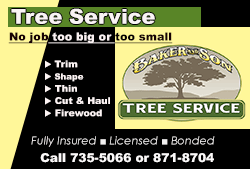|
 This intensive technique was first used in Africa
where it’s hot and dry and the topsoil is shallow. Now gardeners
growing in a variety of climates around the world are using this
technique. You’ll even find keyhole gardens in urban and suburban
backyards. This intensive technique was first used in Africa
where it’s hot and dry and the topsoil is shallow. Now gardeners
growing in a variety of climates around the world are using this
technique. You’ll even find keyhole gardens in urban and suburban
backyards.
Keyhole gardening grows abundant produce while composting
plant-based kitchen scraps in one raised garden plot. Grow plants in
the outer ring of a circular, 6-feet diameter or larger raised bed.
Create an inner circle for composting kitchen scraps, coffee grounds
and garden debris.
Design a small pie shape notch in the circular bed. This provides
easy access to the inner composting circle and gives the bed its
distinct keyhole appearance.

Build the sides of your raised bed garden from stones, cement
blocks, bamboo or any available materials that can withstand the
rigors of your climate. Select a height that works for you and makes
planting, tending and harvesting easy.
It may be easiest to purchase a keyhole garden kit. Select a kit
with all the basic building supplies made from long-lasting
materials, like the Cedar Keyhole Garden (gardeners.com).
Once the walls are built, create an inner compost basket. Use
chicken wire or a similar material that allows moisture and
nutrients to move from the compost basket into the surrounding soil.
It should be at least 12 inches in diameter with the bottom anchored
to the ground and top extending above the soil surface.
Fill the bottom of your raised bed with compostable materials. Start
with a layer of cardboard on the soil surface. Then alternate 4 to
6” layers of brown and green materials just as you would when
building a compost pile. Use twigs, straw, dried leaves, paper,
cardboard and other carbon rich materials for your browns. Include
herbicide-free grass clippings, manure, kitchen scraps, fresh plant
debris and other nitrogen rich materials for your greens. [to top of second
column] |

Add kitchen scraps and garden debris to the compost
basket throughout the growing season. As these decompose water helps
move nutrients from the compost basket to the surrounding soil.
Continue layering until three fourths of the raised bed is filled.
Top it off with compost rich soil for plants to root and grow. Slope
the surface so the highest point is next to the compost basket.
Allow the planting area to settle for several days.
Then fill your garden with your favorite vegetables. Leave just
enough space between plants so they can reach their mature size.
Water new plantings thoroughly. Mulch the soil with shredded leaves,
evergreen needles or other organic material to help conserve
moisture and continue to add organic matter to the soil.
Check the soil moisture and water the garden bed and compost basket
as needed throughout the season.
Soon you’ll be enjoying the convenience of harvesting and composting
in one bed. And you just might find yourself looking for another
sunny spot to add an additional keyhole garden or two.

[Photo by Gardener's Supply Company]
-----
Melinda Myers has written more than
20 gardening books, including Small Space Gardening. She hosts The
Great Courses “How to Grow Anything” DVD series, including the
latest Food Gardening For Everyone DVD set. Myers also hosts the
nationally syndicated Melinda’s Garden Moment TV & radio segments.
She is a columnist and contributing editor for Birds & Blooms
magazine and was commissioned by Gardener’s Supply Company for her
expertise to write this article. Myers’ web site is
www.melindamyers.com. |